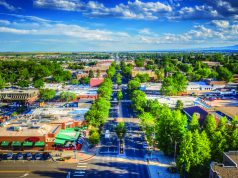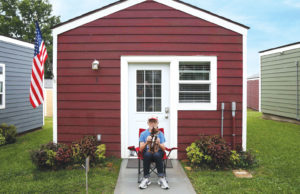
Two years after the Marshall Fire, nearly 300 households have moved back into a rebuilt home. That’s an important number — it symbolizes the resilience of returning families, the outpour of community support and the makings of a revitalized community.
Despite homes being rebuilt twice as fast as the national post-disaster average, there are still households in limbo that aren’t in the rebuilding process. It’s a critical time: Boulder County’s Recovery Navigators grant-funded program is winding down, and some household’s ALE insurance (which covers additional living expenses for displaced homeowners) is set to expire at the end of the year.
It’s hard to track households that haven’t entered the recovery system, but each jurisdiction (Unincorporated Boulder County, Superior, Louisville) has made or is making efforts to understand why.
Katie Arrington, recovery and resilience project manager at Boulder County says finances top the list. It’s expensive to build throughout Boulder County, and some people were massively under-insured. Others chose not to return because it was too emotionally difficult.
In Superior, some residents are still working with builders or negotiating with insurance companies, according to Allison James, disaster preparedness and recovery manager with the Town.
Factors like home design also come into play. Custom homes, like those often found in unincorporated Boulder County, take more time to build than pre-designed homes, plus the County has more building codes, assessments and infrastructure rules for residents.
Because of those factors, Arrington says households in unincorporated Boulder County are the most “stuck.” But every household is different, and it’s hard to generalize.
Approximately 120 fire impacted lots have been sold in Boulder County, and about 70 are listed for sale. Those are people not likely coming back.
“That’s my hard part working in this field, is that number,” Arrington says. “Those are people who stopped at our businesses or whose kids went to school with our kids. That is the unfortunate reality of disasters and wildfires and climate change is that it does result in the migration of a certain population of people.”
Not everyone impacted by the Marshall Fire is represented on recovery data dashboards. Smoke-damaged homes don’t have clear rebuild regulations or standards, so Arrington says many of those residents are wrestling with insurance companies and remediation assessments. Thirty-five smoked-damaged homes are in the Recovery Navigator process, but the total number of impacted homes in this category is unknown. Wind-damaged mobile homes are also often not included.
A few supports are about to change for households too. The Recovery Navigator program will accept new clients until it wraps up in March 2024, but it recommends people reach out “sooner than later” to receive support. The majority of households’ ALE insurance coverage is also set to expire at the end of the year.
Those folks have a few options, including to ask their insurance provider for an extension or their mortgage company for mortgage relief. They can also turn to local resources from nonprofits like the Community Foundation, which announced the launch of the Housing Support Program for qualifying households with expiring ALE.
Jeri Curry, executive director of Marshall ROC, a coalition of community members dedicated to the long-term recovery from the Marshall Fire, says each jurisdiction has its own unique permitting challenges that might delay rebuilding, and there’s still a long road ahead.
“The goal is not to lose any more community members.”
Editor’s Note: A previous version of this story said the Recovery Navigator program stopped accepting new clients on Dec. 1. That was the original plan, according to a County press release, which was updated with a clarification on Dec. 21: “Recovery Navigators will continue to help those impacted by the Marshall Fire through the end of the program in March 2024. A Dec. 1 intake deadline was recommended to allow enough time to receive the recovery support needed.” There was an updated release on Nov. 9.
By the numbers: Marshall Fire Recovery
Superior
• Properties destroyed: 396
• Building permits (issued + pending): 137 (34.6%)
• Move-ins: 155 (39.1%)
Louisville
• Properties destroyed: 550
• Building permits: 284 (51.6%)
• Move-ins: 118 (21.5%)
Unincorporated Boulder County
• Properties destroyed: 157
• Building permits: 69 (43.9%)
• Move-ins: 17 (10.8%)
*Building permit data does not include households who have Certificates of Occupancy. Chart uses data from Dec. 20.
This story was produced as part of our After the Fire series examining how Boulder County is preparing for the next disaster two years after the Marshall Fire. Read the other stories:
On foot As communities push for fewer cars, plans for pedestrian evacuations are slowly coming along by Kaylee Harter
‘Helping themselves’ For marginalized communities, mutual aid is the model for emergency preparedness by Cindy Torres
‘Find a way’ Through fire and flood and dark of night, Via delivers safe transport — for free by Shay Castle
Photo gallery by local filmmaker and photographer Megan Sweeney














